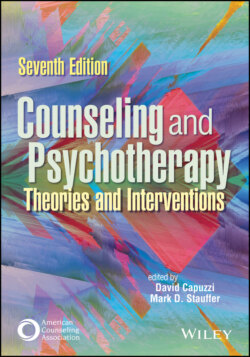Читать книгу Counseling and Psychotherapy - Группа авторов - Страница 120
Chapter 3
Psychodynamic Theories: Psychoanalysis and Beyond
ОглавлениеAdrianne L. Johnson and Anthony Zazzarino
The concepts of psychoanalysis have become interwoven into the fabric of U.S. culture, with terms such as Freudian slip, repression, and denial appearing regularly in everyday language. These concepts originated with the examination of unconscious pain, which manifests into maladaptive behaviors in psychoanalysis. Psychoanalytic theory suggests that early life experiences shape one’s social interactions and relationships in adulthood and is based on the concept that individuals are unaware of the many factors, including childhood trauma, that contribute to their maladaptive behaviors and discomforting emotions.
To accommodate contemporary mental health practices, and to meet the unique needs of diverse client populations, traditional psychoanalytic techniques have evolved into a dynamic inclusion of other theories, which increases its efficacy in fostering client self-awareness through modified application of classical techniques. This evolution has birthed other rapidly emerging approaches, including psychodynamic interpersonal therapy, transactional analysis, object relations theory, and brief psychodynamic theory. These distinctive theoretical approaches utilize original psychoanalytic concepts such as unconscious thoughts, instinctual drives, and psychological defenses formed early in life, but each approach features specific techniques that distinguish each in their application toward problem resolution.
The aim of this chapter is to help counselors gain a brief understanding of classical psychoanalytic theory and its influence on current practices and applications in contemporary mental health treatment. The goals of this chapter are to help counselors meet the following objectives: (a) gain a basic understanding of the foundation, history, and development of psychoanalytic theory; (b) gain a basic understanding of the implications of psychoanalytic theory across populations and contexts; and (c) gain a basic understanding of how to apply psychoanalytic and psychodynamic techniques in counseling practice for the most effective therapeutic outcomes.
